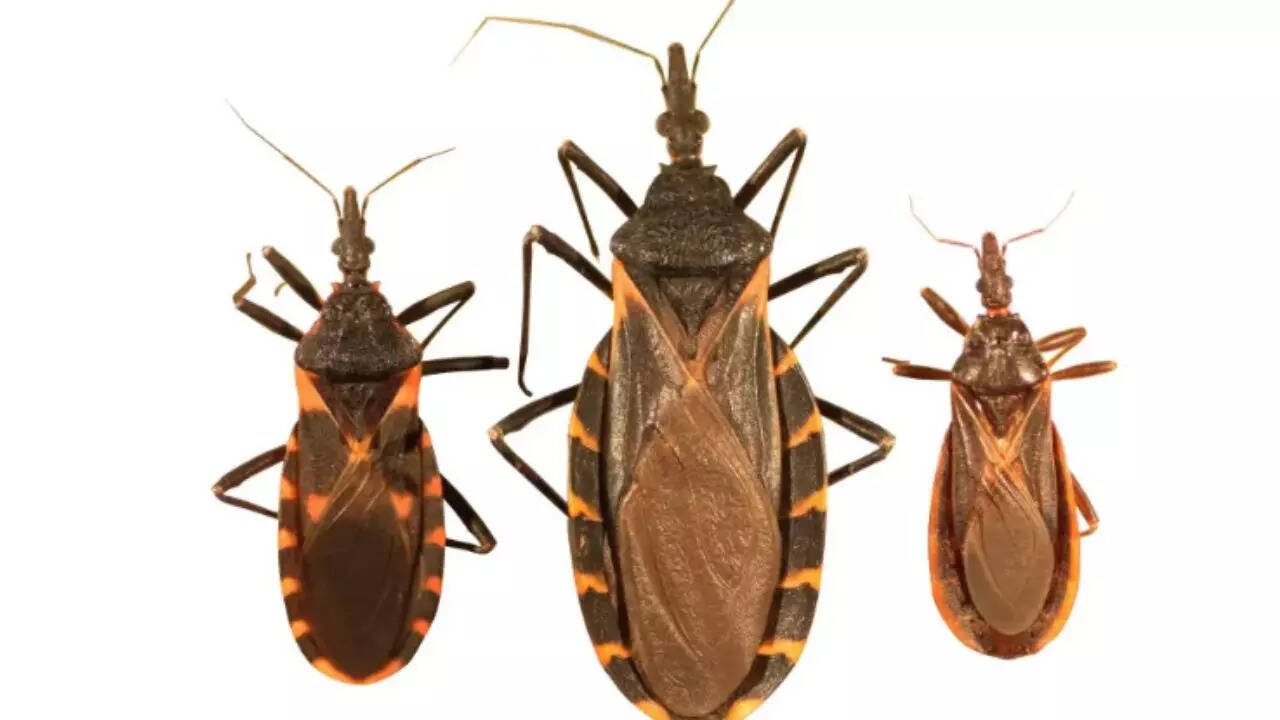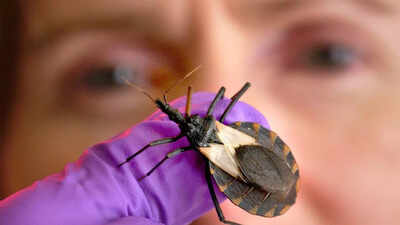Chagas Disease, a parasitic infection transmitted by “kissing bugs,” has been confirmed in Southern California, raising significant public health concerns. The disease is caused by the parasite Trypanosoma cruzi, which is spread through the feces of infected triatomine bugs. While early symptoms may be mild or absent, chronic infection can lead to severe complications, including heart failure and digestive issues. Experts emphasise the importance of early detection and treatment, particularly for individuals in rural areas where kissing bugs are prevalent. Preventive measures include avoiding bug bites and seeking medical attention if symptoms develop. The detection of kissing bugs and local transmission of Chagas Disease in California highlights an emerging public health challenge. With the disease capable of causing severe and sometimes fatal outcomes if left untreated, understanding the risks, symptoms, and treatment options is critical.
Chagas disease threat grows in the US: Transmission and ‘kissing bug’ risk explained
Scientists are growing increasingly concerned about the local transmission of Chagas Disease in the United States. So far, at least eight cases have been confirmed to have been transmitted domestically as reported by ABC7 Eyewitness News. This alarming trend has led experts to urge the Centers for Disease Control and Prevention (CDC) and the World Health Organization (WHO) to officially declare Chagas Disease endemic in the US. As the threat rises, it is essential to understand what Chagas Disease is, how it spreads primarily through ‘kissing bugs,’ and how to identify its symptoms early to prevent serious health complications.
What are ‘kissing bugs’? The insect behind Chagas disease transmission

The name “kissing bugs” comes from the insects’ tendency to bite humans around the face, particularly near the mouth and eyes. These blood-sucking insects have become firmly established in Southern California, with sightings in areas like Griffith Park. But California is not alone: these bugs have been reported in at least 32 other US states, including Texas, New Mexico, and Arizona as reported.Kissing bugs feed on the blood of humans, pets, and wild animals. Their bite is painless but can transmit the parasite responsible for Chagas Disease. According to Texas A&M’s Kissing Bugs Program, their preference for attacking facial areas is what earned them this distinctive nickname.
What is Chagas disease: Know its symptoms
Chagas disease, also known as American trypanosomiasis, is caused by the protozoan parasite Trypanosoma cruzi. This infection can remain silent for years, but if left undiagnosed or untreated, it can lead to severe health complications.The World Health Organization emphasises that timely diagnosis and proper medical intervention are key to preventing life-threatening outcomes associated with the disease.
Chagas disease: Symptoms in acute and chronic phases
Chagas disease manifests in two main phases, each with distinct symptoms.Acute phase symptoms:This phase lasts approximately two months after infection. Common symptoms include:
- Fever and headache
- Enlarged lymph nodes
- Muscle pain and fatigue
- Difficulty breathing
- Abdominal or chest pain
- Swelling at the bite site, sometimes a purplish swelling of the eyelid (known as Romaña’s sign)
These initial symptoms can be mild and easily mistaken for other illnesses, which often leads to underdiagnosis.Chronic phase symptoms:If untreated, the parasite hides in the heart and digestive muscles, leading to long-term complications one to three decades post-infection. Around one-third of infected individuals develop cardiac problems, such as arrhythmias and progressive heart failure. Up to 10% may suffer digestive or neurological issues.In severe cases, the disease damages the nervous system, heart muscles, and digestive tract, potentially resulting in sudden death, as reported by WHO.
Chagas Disease treatment
Effective treatment for Chagas Disease exists, primarily with two antiparasitic medications: benznidazole and nifurtimox. These drugs are most effective when administered early in the acute phase or during congenital infections.
- Early treatment can fully cure the disease.
- The longer the infection remains untreated, the lower the treatment’s efficacy.
- Adults with asymptomatic infections are also recommended to receive treatment to prevent progression.
- Pregnant women and patients with kidney or liver failure should avoid these medications.
- Nifurtimox is contraindicated for individuals with neurological or psychiatric conditions.
Chagas Disease preventive measures
- Avoid bug bites: Use insect repellents, install window screens, and seal cracks and gaps around homes.
- Inspect homes and surroundings: Remove woodpiles, brush, and other bug hiding places near living areas.
- Be vigilant: Learn to identify kissing bugs and monitor for bites or suspicious symptoms.
- Seek medical care early: If bitten or symptoms develop, consult healthcare providers promptly for testing and treatment.
With kissing bugs spreading across much of the southern US, and local cases increasing, awareness of Chagas disease is more important than ever. The disease’s silent nature means many carriers are unaware they’re infected until severe complications arise. Early education, detection, and treatment can save lives and reduce the growing public health burden.Also Read | Hidden lifestyle threats to heart health: How sleep, stress, pollution, gut health, and sugar fuel cardiovascular risk


